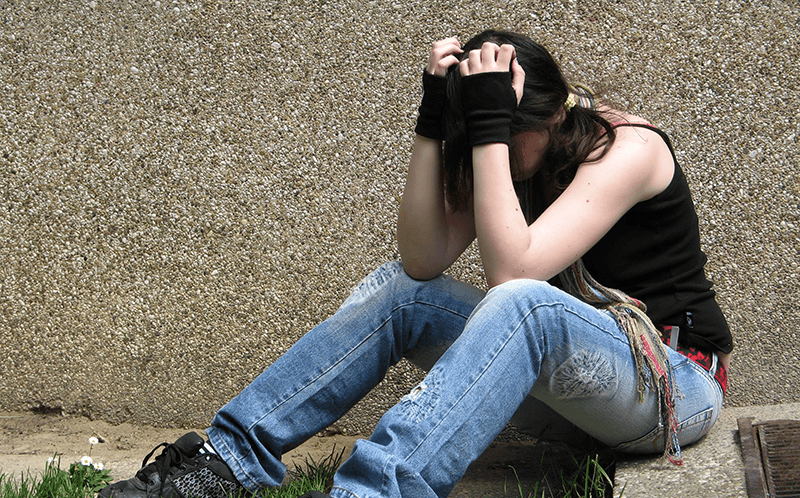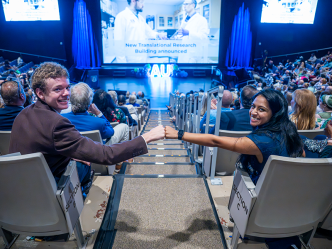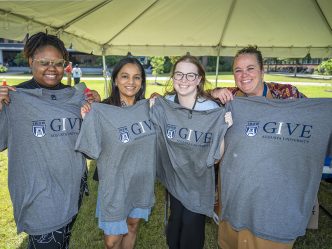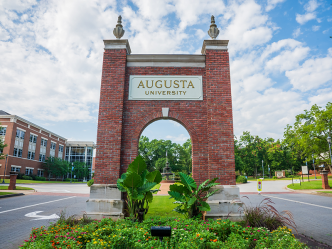This month, 12,400 men will pay for sex with a young woman in Georgia – and 7,200 of them will end up exploiting an adolescent female.
It’s known as human trafficking – or, more specifically, sex trafficking – and it is a $290 million industry in this state, according to the U.S. Justice Department’s Urban Institute in Washington D.C.
Dr. Denise Lenares Solomon, Assistant Professor of Counselor Education in the Augusta University College of Education, has presented on and researched human trafficking and forced prostitution – specifically the Commercial Sexual Exploitation of Children (CSEC). She has conducted workshops in conjunction with the government of Belize and the Belize Young Women’s Christian Association (YMCA). As part of January’s Human Trafficking Awareness Month campaign, she warns that the sex trafficking industry has deep roots in the state, and even in the Augusta area: “It’s here. Our students are being targeted.”
The problem is that not all human trafficking looks like what viewers see on crime procedural television dramas. One common perception of the crime involves young Asian, Eastern European or Latino women smuggled over and concealed in mobile brothels. While local law enforcement have rescued women from such situations, incidents of sex trafficking have also occurred in local schools – either older students targeting younger students, or students choosing to sell access to themselves for money or expensive goods.
“Some of them are being taken in by boyfriends who say, ‘If you love me, this is what you will do for me,’” Lenares Solomon said. For example a young girl going to a party, drinking too much, engaging in compromising behavior that is photographed, and then being blackmailed for further sexual activity in exchange for confidentiality.
The International Labor Organization estimates that in developed countries like the United States, 1.5 out of every 1,000 people are victims of trafficking. That means in a high school with 2,000 students, three students could be victims.
“It is a very deliberate and focused act. There is a grooming process,” Lenares Solomon explained. In many cases the grooming process begins with a trafficker recognizing that a potential victim possesses some level of vulnerability, usually issues with self-esteem, emotional neediness or economic insecurity. They then ingratiate themselves to the victims, developing what resembles a caring relationship. And once they have enough information on the victim, they engage in deep manipulation, blackmail, threats or violence to get the victim to sell herself.
It happens more often than we would care to admit.
“It’s a money and power enterprise. Some incidences occur on such a small level that kids don’t recognize it as trafficking or prostitution,” she said. Some offenders are young, affluent students who use their social position to exploit power in their relationships and take advantage of other kids. A popular student may pressure an underclassman for erotic photos, and then threaten to share them with the student’s family, with classmates, or with church members. Shame, guilt and manipulation influence victims into being sexually exploited.
These at times may be viewed as “sexting,” or bullying. But it’s much more serious than that. It is sex trafficking, and it is a crime in Georgia.
“If we don’t recognize it as a problem, how can we address it?” she asked.
The key to targeting the problem is enlisting the help of students, Lenares Solomon said: “They know more than we do, but with the right information and training, teachers and counselors can stop it from happening.”
Lenares Solomon has already seen information have an impact. One teacher at a workshop in Belize shared an experience she had after she overheard a conversation between two schoolgirls through an open window. The girls were talking about their new boyfriends who had bought them gifts and were going to take them across the border into Mexico for a party.
“The scenario rang alarm bells for her. She was able to notify the authorities, and she saved those girls from disappearing,” Lenares Solomon said. “If more people had this kind of training, more children could be saved.”
Some of the warning signs for children being groomed for prostitution include:
- More frequent absences, unexplained absences
- Suddenly in possession of material goods not within family’s income limitations, such as expensive clothing, jewelry, manicures, pedicures, etc.
- Increased use of drugs or alcohol
- A new group of friends
- Withdrawal from or loss of interest in age-appropriate activities
- Sudden change in dress, hygiene or grooming
- Sudden change in personality
- Show signs of physical harm
- Become depressed, fearful or withdrawn
- Have a history of running away or currently be on run
- Begin spending time with an older boyfriend or girlfriend
- Have new tattoos or branding
- Be performing work inappropriate for his or her age
- Become isolated from family, friends or sources of support
- No longer have control of his or her driver’s license or other identification documents
 Augusta University
Augusta University




